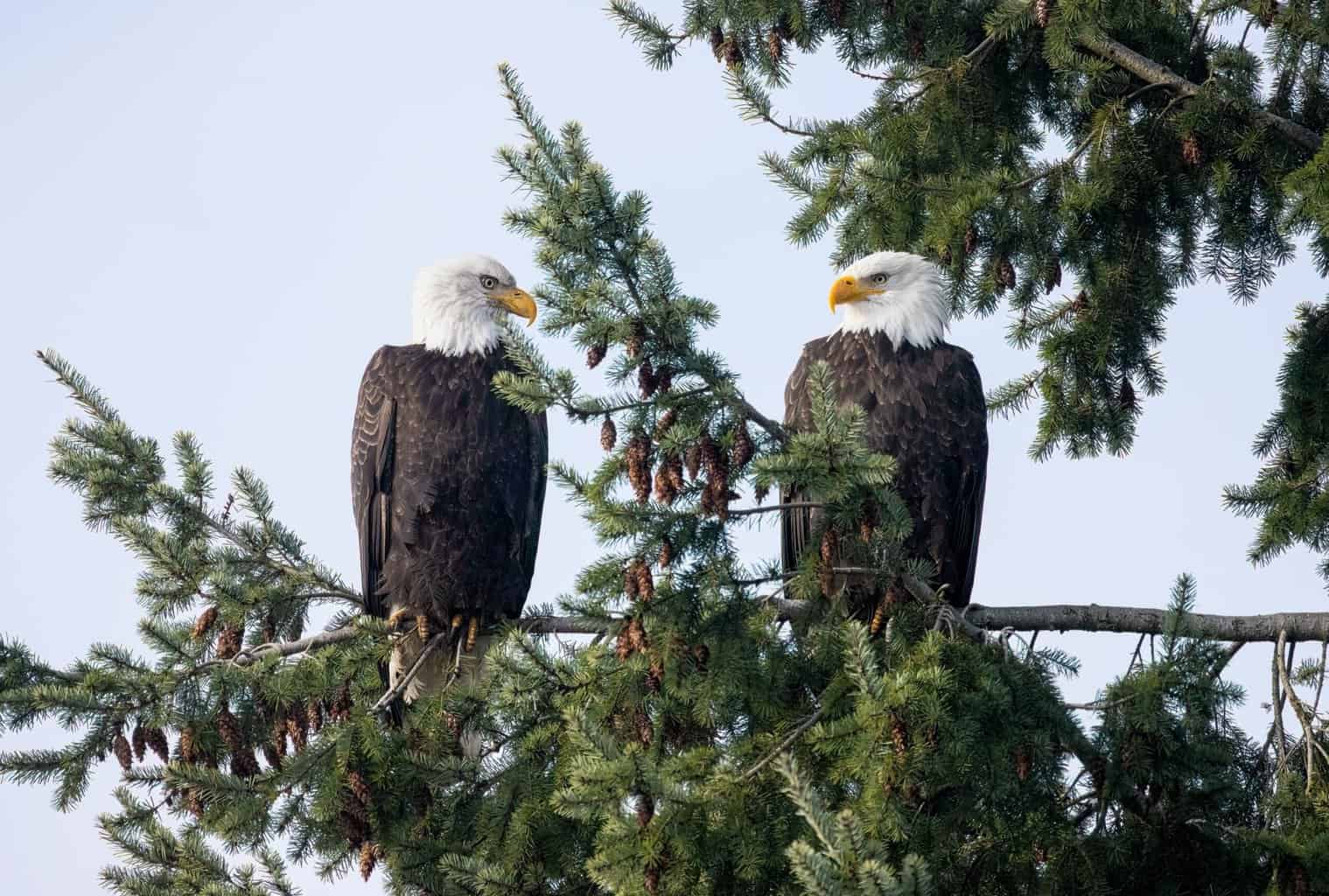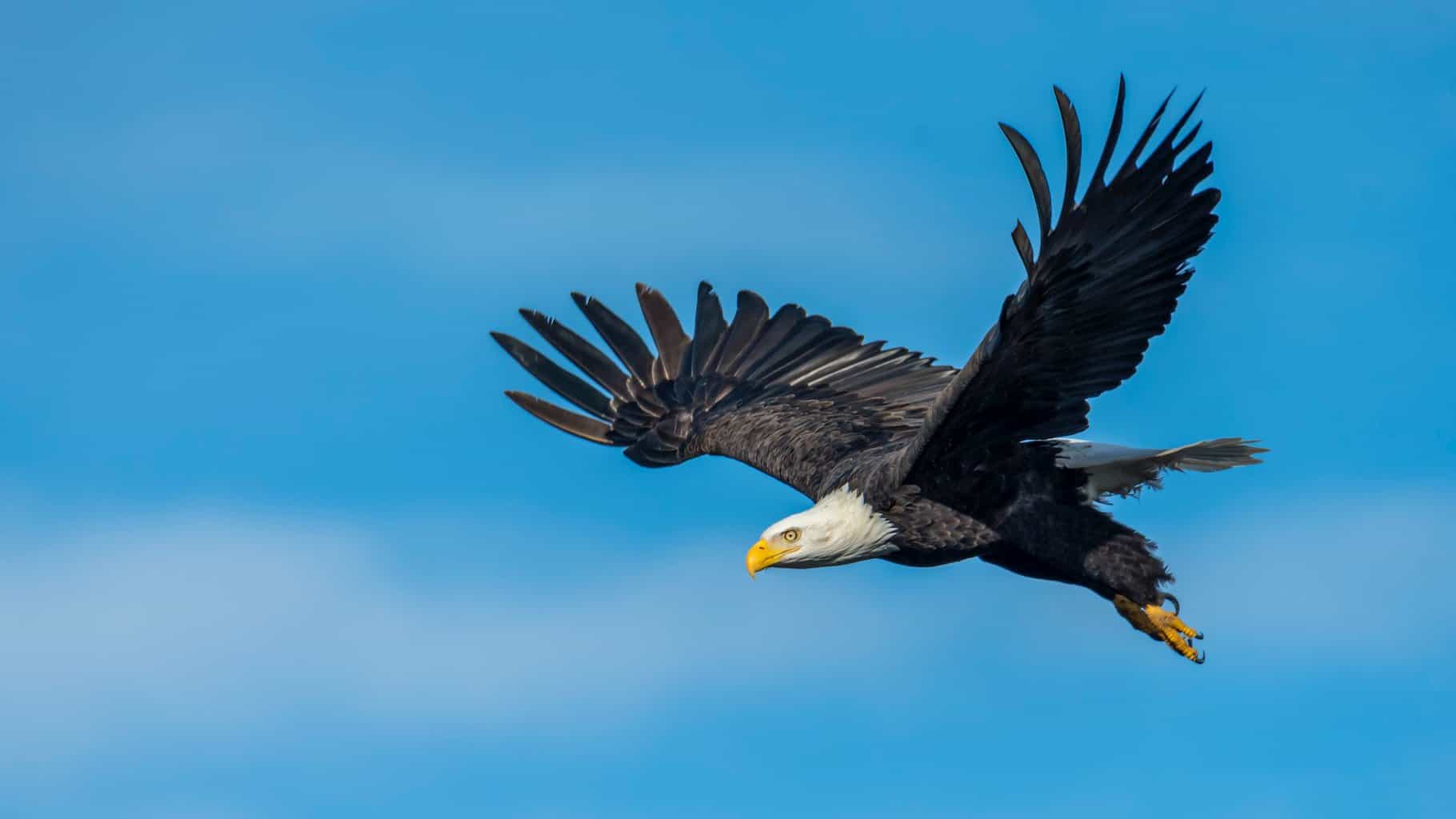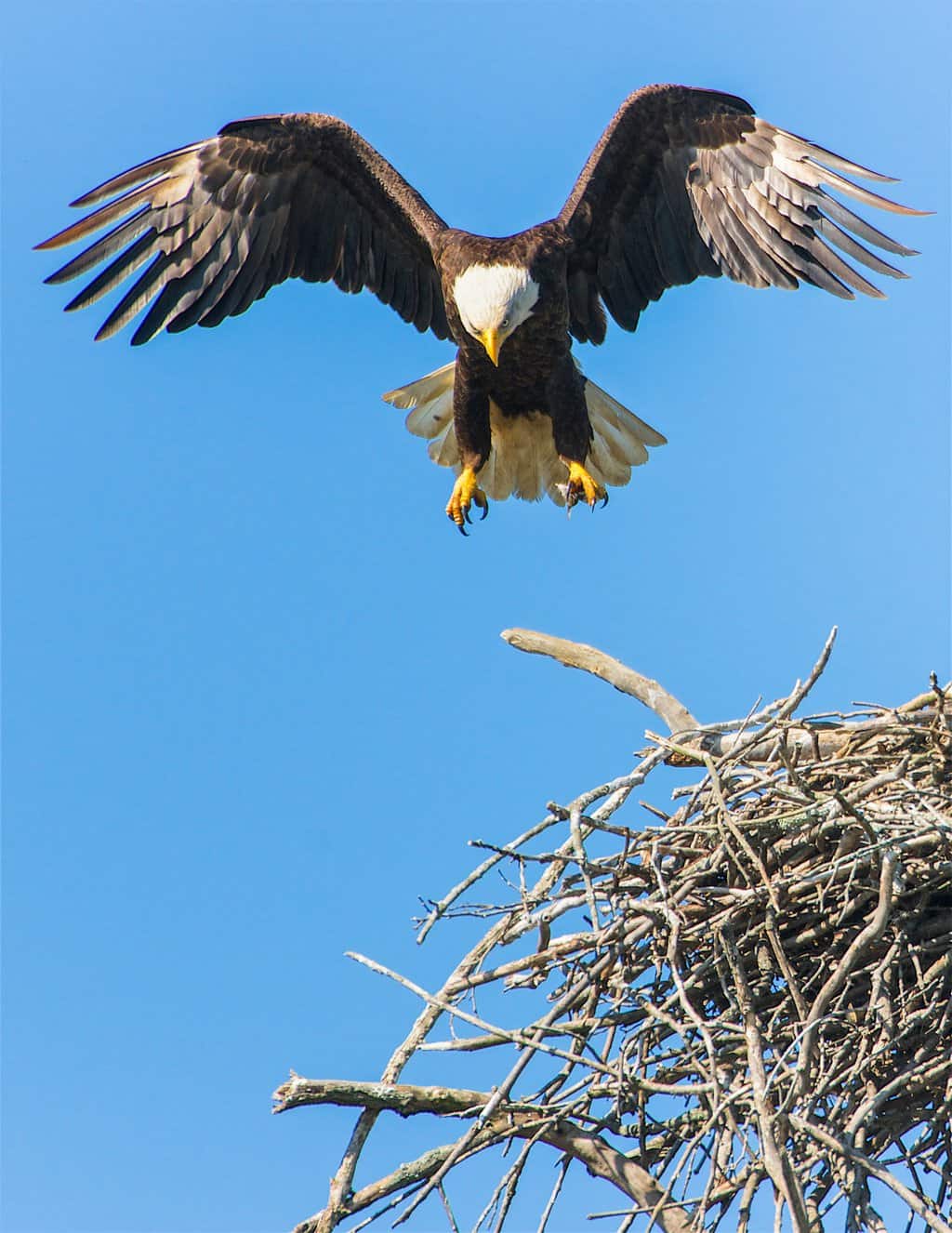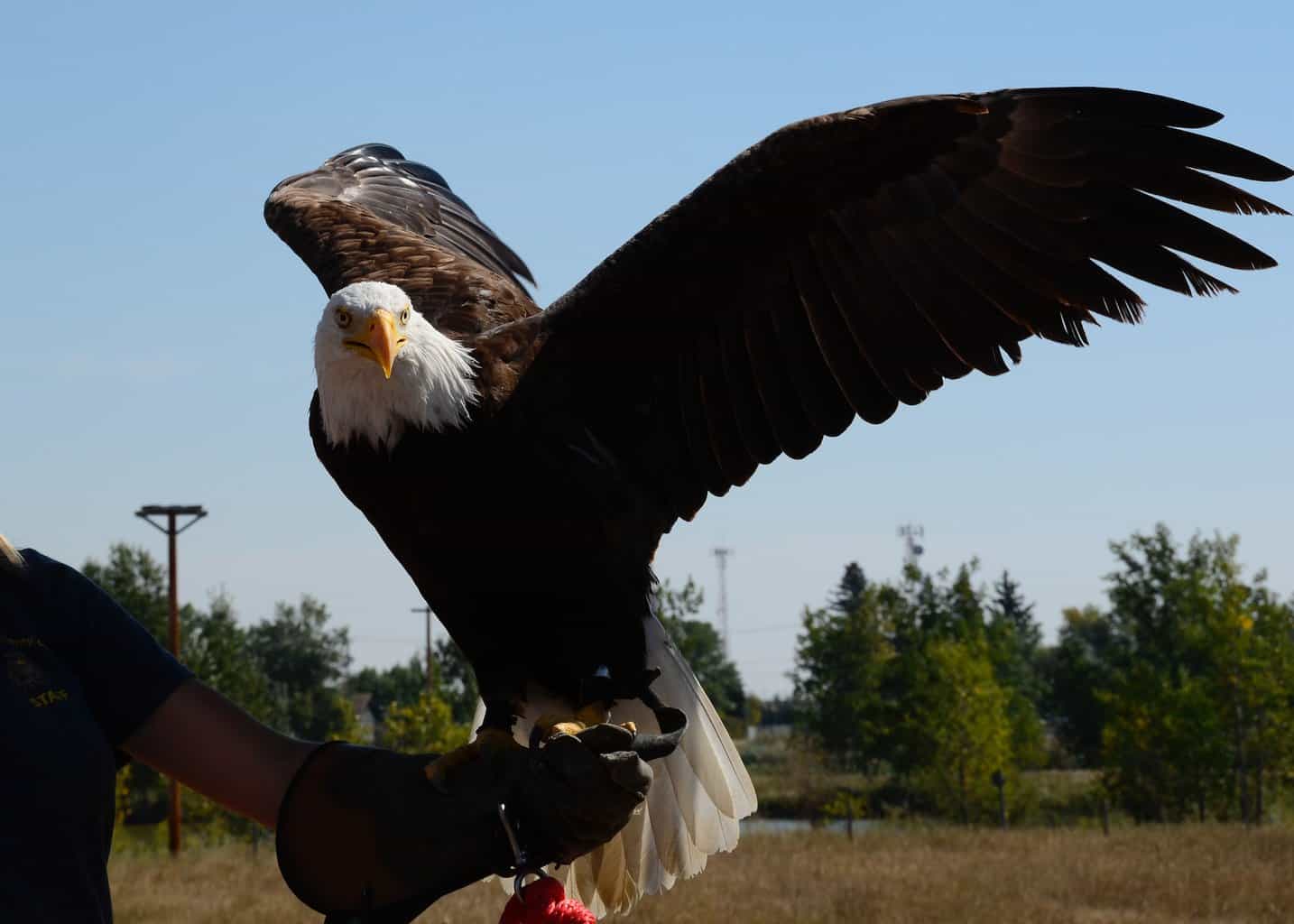- Best Amazon Bird Baths Guide - September 26, 2023
- Best Copper Bird Baths - August 30, 2023
- Best Bird Baths Available at Home Depot - August 26, 2023
Bald eagles are among the most iconic birds in North America, some would say the most majestic. Their giant wingspans and striking white heads are a sight to behold if you’re lucky enough to see one.
Few other birds look like bald eagles; the golden eagle is the closest in size and coloration – at least for immature bald eagles – and there are a few other large birds that soar, like ospreys and turkey vultures. But once you’ve seen an adult bald eagle, there’s no mistaking it for anything else, and it’s a sight you won’t forget.
Once you’ve identified that you’ve seen a bald eagle, you may want to know whether you’ve seen a male or a female. However, separating males from females can be one of the most challenging tasks. In some species, it is impossible to tell the sexes apart by plumage or sound; in others, it is merely tricky. Luckily for us, bald eagles fall into the latter category, but they don’t make it easy.
The Bottom Line
You can find bald eagles breeding throughout most of Canada and parts of the United States and wintering, especially near bodies of water. If the bird is soaring, look for a large wingspan held flat, and the critical ID feature is a white head and tail with a dark brown body to know you’ve spotted an adult bald eagle.
In the wild, you can tell the sexes apart by size – female bald eagles are about 25% bigger than males. By behavior, like nesting – females lay eggs, do more incubating, brooding, and feeding, and have a lower call than males. You can also tell them apart by morphological measurements – though absolute differences are so minor, this is only possible if you have one in hand. You can also tell by genetics if you have a tissue sample.
Most of the time, you probably won’t know if you’ve seen a male or female, but hopefully, you can at least tell that you’ve seen a bald eagle.
Coloration
An adult bald eagle is easy to tell apart from other birds – there are no other species with an all-white head and tail and dark brown body. Immature birds are a little trickier, as they can be confused with the similarly-sized golden eagle.
Is it a Bald Eagle?
They are most easily distinguished in flight, as from underneath, immature bald eagles have white in the underwing coverts and often the body. In contrast, immature golden eagles have white at the base of their primary feathers, and adult golden eagles are uniformly dark underneath. At rest, immature bald eagles have all dark tails, immature golden eagles have white at the base of their tail feathers, and mature golden eagles have faint lightening or banding.
Is it a Female Bald Eagle?
Female bald eagles look identical to males of all ages. Both sexes have white heads and tails and dark brown bodies as adults, with yellow bills and legs. Juvenile bald eagles start all dark, including their bills and feet, and over the subsequent five molts (one per year), the heads of immature eagles get progressively whiter. At the same time, their body obtains variable amounts of white after their first molt and has less and less white each time they molt.
Size
Bald eagles are giants! They are one of North America’s largest birds of prey, with a wingspan usually 6-7.5 feet wide and weighing between 3-6 kg. Golden eagles are similar in size, and California condors are even larger, while ospreys and turkey vultures are smaller. Remember, bald eagles fly with flat wings, ospreys have their wings kinked, and turkey vultures are V-shaped in flight.
Dimorphism
When distinct forms in a species differ in some trait, it is called dimorphism – ‘di’ meaning two, and ‘morph’ meaning body form. Sexual size dimorphism is the more specific term for when males and females differ in size, which is the case with bald eagles.
Female Dimorphism
Females have larger bodies than males and are generally around 25% heavier. This can be hard to determine if you only see one bird alone; it is more beneficial if both sexes are side-by-side or if you have a lot of experience judging size at a distance.
Two other traits separate adult males and females: bill depth and length of the hallux claw (the claw on the toe that faces backward). Females have deeper bills and more extended claws on their hallux than males.
However, these slight differences are so minor (3mm for bills and 5mm for claws, on average) that you won’t be able to notice them in free-living birds. Unless you are fortunate enough to be part of a team handling these birds, these differences won’t help you determine if you’re seeing a male or female.
The difference between sexes is apparent even when they are nestlings. From 20-24 days of age, females already had deeper bills, and from 25-29 days, females had a more extended foot pad. Remember, these differences are small and only detected because nestlings were measured with calipers. Bill depth only differed by about 3mm, and foot pad by 1-1.5cm. But combined, they successfully predicted nestling sex by 91%.
Breeding
Bald eagles nest high up in large trees that are in relatively close proximity to water and make enormous nests. This is because they are large birds and need a large area to raise chicks, but also because they reuse nests yearly, adding branches and twigs, so old nests can be huge. The largest on record was 2.9 m wide and 6 m deep, weighing 4,409 pounds!
Copulation
If you’re lucky enough to catch copulatory behavior, you can identify the male eagle by his position on top and the female eagle on the bottom. When ready for copulation, the female has also been recorded making a unique high-pitched call.
Nesting
In the same vein, if you happen to be watching a nest, the female will spend time in the nest before laying (though the male may, too), and if you happen to see an eagle actually lay an egg, you can be sure that’s the female! Some females display lethargy just before egg-laying, while others seem restless, so it may be difficult to identify sex based on pre-egg-laying behavior alone.
Though females incubate the eggs for somewhat more time than males, females brood the nestlings much more than males. The female also feeds the nestlings the vast majority of the time. This means that nestling care can indicate whether you see a male or female adult.
Since most nests are high up, watching eagle behavior on a live-streamed nest cam is a great way to learn about all the nuances of their nesting behavior!
Behavior
Many birds fight for food, and bald eagles are no exception, especially when they gather in large groups during the winter. Size is often a determinant of who wins aggressive interactions in birds.
This is also true in bald eagles, with the heavier female winning all interactions against the smaller males. Their size was more important than age, as even young females could supplant older males. So if you’re witnessing two bald eagles fighting and can’t tell the size differences, the winner will likely be a female.
FAQs
Answer: Absolutely! Once they are adults in their 5th year, both males and females have fully white heads. Bald eagles show no differences in plumage between the sexes.
Answer: Just a bald eagle! There is no separate name for female (or male) bald eagles.
Answer: Yes. Like all birds, bald eagle males and females have different sex chromosomes. In mammals, the male is heterozygous (hetero = different, azygous = from the zygote or fertilized ovum), normally denoted as XY, while the female is homozygous (homo = same), denoted as XX. In birds, it’s the opposite – the female is heterozygous, denoted as ZW, and the male is homozygous, ZZ. So, using an analysis of DNA in the lab, you can tell the sex of a bird by genetics.
In Conclusion
Bald eagle populations were heavily impacted by hunting activities and pesticide use that decimated their numbers over the course of 200 years from over 300,000 to less than 1,000 in the continental US. They recovered enough that they were removed from the Endangered list in 2007.
Now they can be found in many states and provinces, and they are a great example of how better information and laws can help species recover if they have enough habitat. Bald eagles are large, majestic birds with distinctive white heads and tails and are the national emblem of the United States. They are an essential symbol for several First Nation tribes. It’s cool to know that those images could very well be a female bird!
References
- Bortolotti, G. R. (1984). Sexual size dimorphism and age-related size variation in Bald Eagles. The Journal of wildlife management, 72-81.
- Bortolotti, G. R. (1984). Criteria for determining age and sex of nestling bald eagles. Journal of Field Ornithology, 55(4), 467-481.
- Bryan, A. L., Hopkins, L. B., Eldridge, C. S., Brisbin, I. L., & Jagoe, C. H. (2005). Behavior and food habits at a Bald Eagle nest in inland South Carolina. Southeastern Naturalist, 4(3), 459-468.
- Cain, S. L. (1985). Nesting activity time budgets of Bald Eagles in southeast Alaska. Graduate Student Theses, Dissertations, & Professional Papers. 7060. https://scholarworks.umt.edu/etd/7060
- Garcelon, D. K. (1990). Observations of aggressive interactions by Bald Eagles of known age and sex. Condor, 532-534.
- Route, W. T., Dykstra, C. R., Williams, K. A., Campbell-Spickler, J., Martell, M. S., & Key, R. L. (2022). Breeding Phenology and Nestling Morphology of Bald Eagles in the Upper Midwestern United States. Journal of Raptor Research. https://doi.org/10.3356/JRR-21-76





